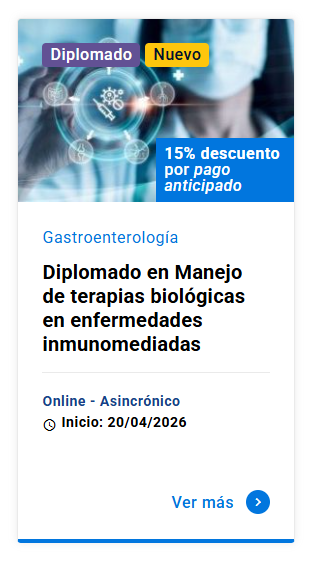Estatinas en enfermedad renal crónica
DOI:
https://doi.org/10.11565/arsmed.v42i1.654Palabras clave:
hipolipemiantes, estatinas, enfermedad renal crónicaResumen
La enfermedad renal crónica constituye una patología de prevalencia e impacto creciente en la población mundial por sus múltiples complicaciones, incluyendo un riesgo cardiovascular aumentado, que representa la principal causa de morbimortalidad en pacientes nefrópatas crónicos. Sin embargo, la relevancia de las dislipidemias, especialmente, la hipercolesterolemia LDL, en el deterioro de la función renal y desarrollo de ateroesclerosis en sujetos con daño renal crónico no ha sido claramente establecida. Esta situación ha generado controversia sobre el beneficio real del uso de hipolipemiantes en estos pacientes. En base a la evidencia disponible, incluyendo estudios clínicos recientes, la recomendación más apropiada sugiere que el uso de terapia hipolipemiante basada en estatinas (con o sin ezetimiba) es beneficioso desde un punto de vista cardiovascular en nefrópatas crónicos con insuficiencia renal leve a moderada antes de la diálisis. Por otro lado, no existe evidencia definitiva para apoyar el uso rutinario de este tipo de hipolipemiantes en el manejo del deterioro de la filtración glomerular y/o la proteinuria. Basándose en la evidencia analizada en esta revisión, las futuras guías clínicas para el manejo del daño renal crónico deberán incorporar el uso de estatinas y/o ezetimiba como un elemento más dentro del armamento terapéutico de este tipo de pacientes.Descargas
Citas
Athyros VG, Mikhailidis DP, Papageorgiou AA. (2004). The effect of statins versus untreated dyslipidaemia on renal function in patients with coronary heart disease: a subgroup analysis of the Greek Atorvastatin and Coronary Heart Disease Evaluation (GREACE) study. J Clin Pathol 57:728-734.
Atthobari J, Brantsma AH, Gansevoort RT, Visser ST, Asselbergs FW, van Gilst WH, et al. (2006). The effect of statins on urinary albumin excretion and glomerular filtration rate: results from both a randomized clinical trial and an observational cohort study. Nephrol Dial Transplant 21(11):3106.
Baigent C, Landray M, Leaper C, Altmann P, Armitage J, Baxter A, et al. (2005). First United Kingdom Heart and Renal Protection (UK-HARP-I) study: biochemical efficacy and safety of simvastatin and safety of low-dose aspirin in chronic kidney disease. Am J Kidney Dis 45(3):473.
Baigent C, Landray MJ, Reith C, Emberson J, Wheeler DC, Tomson C, et al. (2011). The effects of lowering LDL cholesterol with simvastatin plus ezetimibe in patients with chronic kidney disease (Study of Heart and Renal Protection): a randomised placebo-controlled trial. Lancet 377:2181-2189.
Bergström J, Lindholm B, Lacson E Jr, Owen W Jr, Lowrie EG, Glassock RJ, et al. (2000). What are the causes and consequences of the chronic inflammatory state in chronic dialysis patients? Semin Dial 13(3):163-175.
Bianchi S, Bigazzi R, Caiazza A, Campese VM. (2003). A controlled, prospective study of the effects of atorvastatin on proteinuria and progression of kidney disease. Am J Kidney Dis 41:565-570.
Briet M, Boutouyrie P, Laurent S, London GM. (2012). Arterial stiffness and pulse pressure in CKD and ESRD. Kidney Int 82(4):388-400.
Campese VM, Ku E, Bigazzi R, Bianchi S. (2011). Do HMG-CoA reductase inhibitors improve kidney function? The saga continues. J Nephrol 24:550-553.
Catapano AL, Reiner Z, De Backer G, Graham I, Taskinen MR, Wiklund O, et al. (2011). ESC/EAS Guidelines for the management of dyslipidaemias The Task Force for the management of dyslipidaemias of the European Society of Cardiology (ESC) and the European Atherosclerosis Society (EAS). Atherosclerosis 217:S1-44.
Chang JW, Yang WS, Min WK, Lee SK, Park JS, Kim SB. (2002). Effects of simvastatin on high-sensitivity C-reactive protein and serum albumin in hemodialysis patients. Am J Kidney Dis 39(6):1213-1217.
Cuevas A, Maíz A, Arteaga A. (1998). Dyslipidemias in renal diseases: pathogenesis and treatment. Rev Med Chil 126:315-21
Deshmukh A. & Mehta JL. (2011). Statins and renal disease: friend or foe? Curr Atheroscler Rep 13(1):57-63.
Drüeke TB. & Massy ZA. (2010). Atherosclerosis in CKD: differences from the general population. Nat Rev Nephrol 6:723-35.
Eckel RH, Jakicic JM, Ard JD, de Jesus JM, Houston Miller N, Hubbard VS. (2014). 2013 AHA/ACC guideline on lifestyle management to reduce cardiovascular risk: a report of the American College of Cardiology/American Heart Association Task Force on Practice Guidelines. Circulation 129 (25 Suppl 2):S76-99.
Fellström BC, Jardine AG, Schmieder RE, Holdaas H, Bannister K, Beutler J, et al. (2009). Rosuvastatin and cardiovascular events in patients undergoing hemodialysis. N Engl J Med 360:1395-407.
Fried LF. (2008). Effects of HMG-CoA reductase inhibitors (statins) on progression of kidney disease. Kidney Int 74:571-576.
Grundy SM, Cleeman JI, Merz CN, Brewer HB Jr, Clark LT, Hunninghake DB, et al. (2004). Implications of recent clinical trials for the National Cholesterol Education Program Adult Treatment Panel III guidelines. Circulation 110:227-239.
Haynes R, Lewis D, Emberson J, Reith C, Agodoa L, Cass A, et al. (2014). Effects of lowering LDL cholesterol on progression of kidney disease. J Am Soc Nephrol 25(8):1825.
Holdaas H, Holme I, Schmieder RE, Jardine AG, Zannad F, Norby GE, et al. (2011). Rosuvastatin in diabetic hemodialysis patients. J Am Soc Nephrol 22(7):1335-1341.
Ichihara A, Hayashi M, Ryuzaki M, Handa M, Furukawa T, Saruta T. (2002). Fluvastatin prevents development of arterial stiffness in haemodialysis patients with type 2 diabetes mellitus. Nephrol Dial Transplant 17(8):1513-1517.
Jara A, Mezzano S. (2008). Vascular damage in chronic kidney disease. Rev Med Chil 136:1476-84.
Kasiske BL, Wanner C, O'Neill WC. (2006). An assessment of statin safety by nephrologists. Am J Cardiol 97(8A):82C-85C.
Keller D. (2010). Atorvastatin beats rosuvastatin in protecting kidneys in diabetic and nondiabetic patients. XLVII European Renal Association-European Dialysis and Transplant Association (ERA-EDTA) Congress. Presented June 27, 2010 Medscape Medical News. http://www.medscape.com/viewarticle/724583 (Consulted on May 4, 2017)
Kidney Disease Outcomes Quality Initiative (K/DOQI) Group. (2003). K/DOQI clinical practice guidelines for management of dyslipidemias in patients with kidney disease. Am J Kidney Dis 41(4 Suppl 3):I-IV,S1-91.
März W, Genser B, Drechsler C, Krane V, Grammer TB, Ritz E, et al. (2011). Atorvastatin and low-density lipoprotein cholesterol in type 2 diabetes mellitus patients on hemodialysis. Clin J Am Soc Nephrol 6(6):1316-1325.
National Cholesterol Education Program (NCEP) Expert Panel. (2002). Third Report on Detection, Evaluation, and Treatment of High Blood Cholesterol in Adults (Adult Treatment Panel III) final report. Circulation 106:3143-3421.
National Kidney Foundation (2002). KDOQI clinical practice guidelines for chronic kidney disease: Evaluation, classification, and stratification. Am J Kidney Dis 39:S1-S266.
Navaneethan SD, Pansini F, Perkovic V, Manno C, Pellegrini F, Johnson DW, et al. (2009). HMG CoA reductase inhibitors (statins) for people with chronic kidney disease not requiring dialysis. Cochrane Database Syst Rev 15(2):CD004289.
Palmer SC, Navaneethan SD, Craig JC, Johnson DW, Perkovic V, Hegbrant J, et al. (2014). HMG CoA reductase inhibitors (statins) for people with chronic kidney disease not requiring dialysis. Cochrane Database Syst Rev 31;(5):CD007784.
Panichi V, Paoletti S, Mantuano E, Manca-Rizza G, Filippi C, Santi S, et al. (2006). In vivo and in vitro effects of simvastatin on inflammatory markers in pre-dialysis patients. Nephrol Dial Transplant 21(2):337-344.
Rahman M, Baimbridge C, Davis BR, Barzilay J, Basile JN, Henriquez MA, et al. (2008). Progression of kidney disease in moderately hypercholesterolemic, hypertensive patients randomized to pravastatin versus usual care: a report from the Antihypertensive and Lipid-Lowering Treatment to Prevent Heart Attack Trial (ALLHAT). Am J Kidney Dis 52 (3):412.
Ruggenenti P, Perna A, Tonelli M, Loriga G, Motterlini N, Rubis N, et al. (2010). Effects of add-on fluvastatin therapy in patients with chronic proteinuric nephropathy on dual renin-angiotensin system blockade: the ESPLANADE trial. Clin J Am Soc Nephrol 5(11):1928-1938.
Shepherd J, Kastelein JJ, Bittner V. (2007). Effect of intensive lipid lowering with atorvastatin on renal function in patients with coronary heart disease: the Treating to New Targets (TNT) study. Clin J Am Soc Nephrol 2:1131-1139.
Stone NJ, Robinson JG, Lichtenstein AH, Bairey Merz CN, Blum CB, Eckel RH, et al. (2014). 2013 ACC/AHA guideline on the treatment of blood cholesterol to reduce atherosclerotic cardiovascular risk in adults: a report of the American College of Cardiology/American Heart Association Task Force on Practice Guidelines. J Am Coll Cardiol 63(25 Pt B):2889-934.
Su X, Zhang L, Lv J, Wang J, Hou W, Xie X, et al. (2016). Effect of Statins on Kidney Disease Outcomes: A Systematic Review and Meta-analysis. Am J Kidney Dis 67(6):881-892.
Tonelli M, Isles C, Craven T, Tonkin A, Pfeffer MA, Shepherd J, et al. (2005). Effect of pravastatin on rate of kidney function loss in people with or at risk for coronary disease. Circulation 112 (2):171.
Tonelli M, Moyé L, Sacks FM, Cole T, Curhan GC; Cholesterol and Recurrent Events Trial Investigators. (2003). Effect of pravastatin on loss of renal function in people with moderate chronic renal insufficiency and cardiovascular disease. J Am Soc Nephrol 14:1605-1613.
Wanner C, Krane V, März W, Olschewski M, Mann JF, Ruf G, et al. (2005). Atorvastatin in patients with type 2 diabetes mellitus undergoing hemodialysis. N Engl J Med 353:238-248.
Wanner C. & Tonelli M. (2014). KDIGO Clinical Practice Guideline for Lipid Management in CKD: summary of recommendation statements and clinical approach to the patient. Kidney Int 85 (6):1303-1309.
Zhang H, Plutzky J, Skentzos S, Morrison F, Mar P, Shubina M, et al. (2013). Discontinuation of statins in routine care settings: a cohort study. Ann Intern Med 158 (7):526-534.
Descargas
Publicado
Cómo citar
Licencia
Derechos de autor 2017 ARS MEDICA Revista de Ciencias Médicas

Esta obra está bajo una licencia internacional Creative Commons Atribución-CompartirIgual 4.0.
Los autores/as conservan sus derechos de autor y garantizan a la revista el derecho de primera publicación de su obra, la que estará simultáneamente sujeta a la Licencia CC BY-SA 4.0 (Ver declaración de Acceso Abierto).







